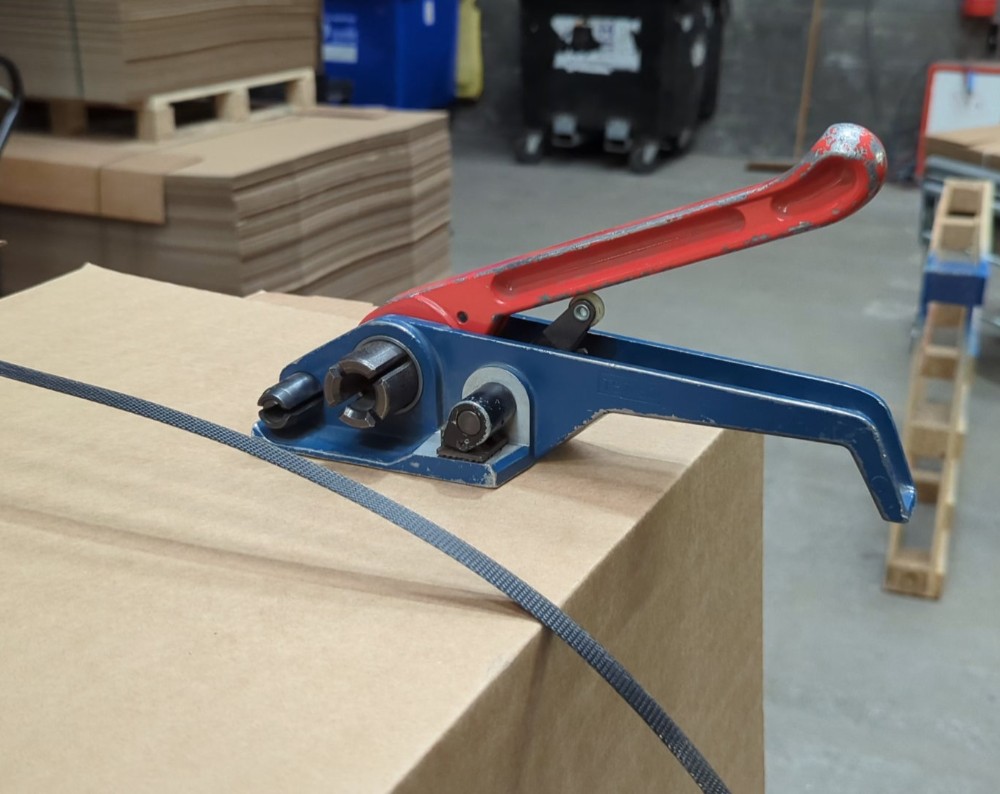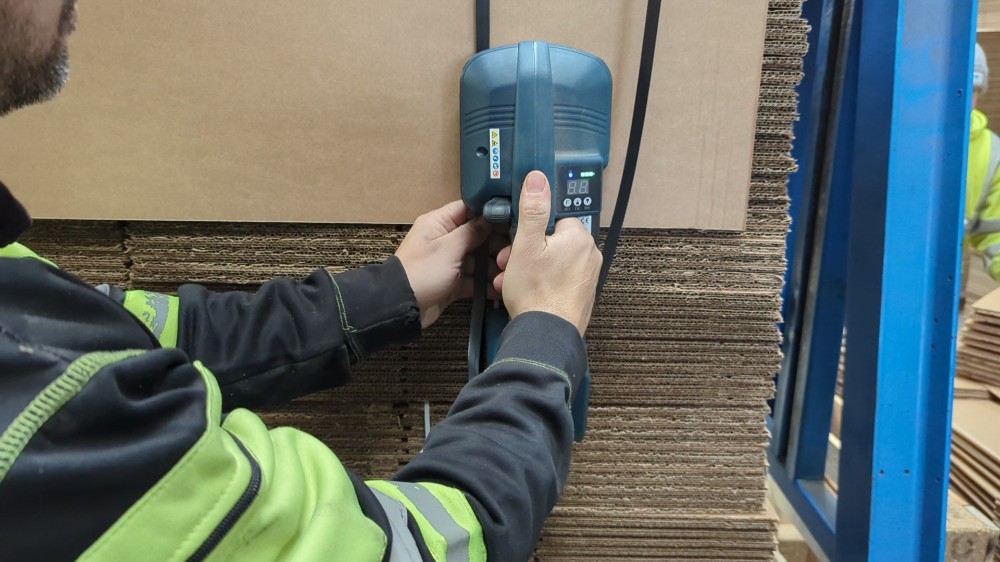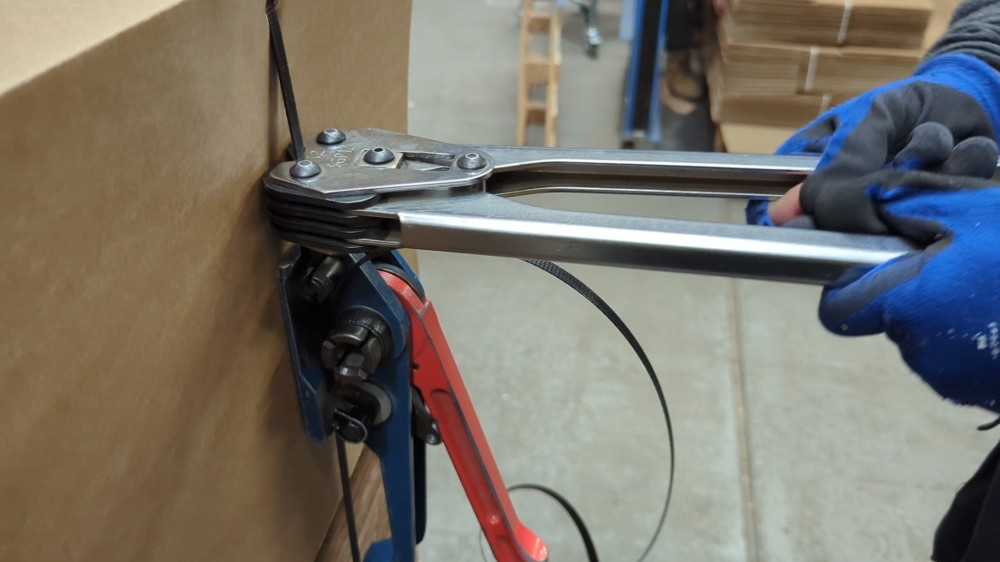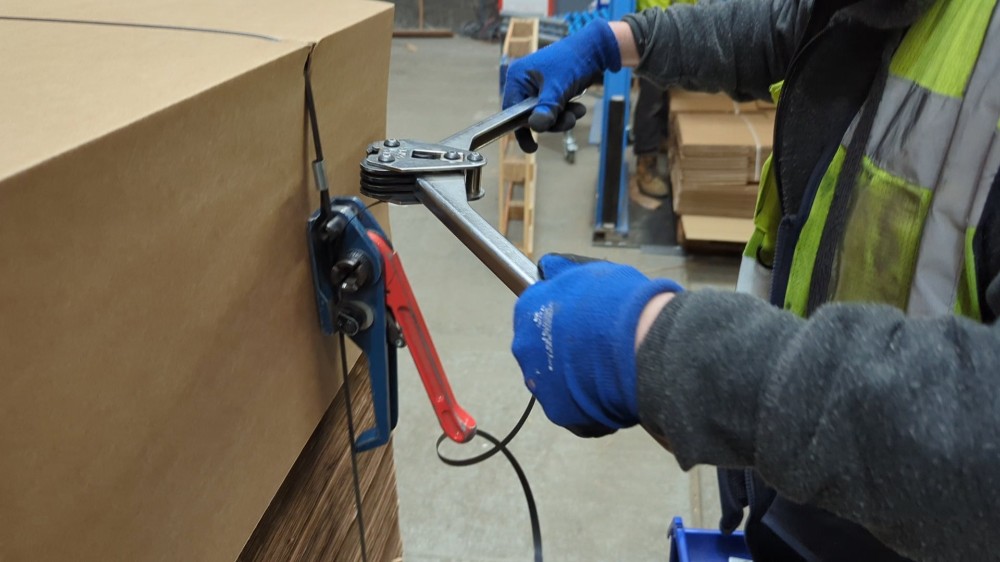Blog - Which Strapping to Use for Your Packaging - Polypropylene, Polyester or Steel

Choosing the wrong material may lead to wasted resources, damaged goods and increased costs. With various strapping options available, such as polypropylene, polyester, and steel, make an informed decision for your business with our expert guide.
- Product Safety: Strapping secures items to prevent movement and damage during shipping.
- Efficiency: It keeps products stable, reducing handling disruptions and making storage easier.
- Cost Savings: Fewer damaged goods mean lower return rates and less wasted packaging.
- Sustainability: Opting for eco-friendly strapping materials helps businesses reduce waste and align with environmental goals.

Polypropylene Strapping
Polypropylene strapping is a type of plastic strapping which is strong and cost-effective. It’s widely used across a range of industries in everyday palleting and packaging.
- Material: Lightweight, flexible plastic.
- Strength: Best for light-duty packaging; stretches under tension.
- Applications: Ideal for bundling boxes and light pallets in e-commerce or retail. It can be used with strapping machines and sealed using friction weld. It can also be used with hand tools that tension it, allowing the user to seal with metal clips.
- Durability: Suitable for indoor use but less durable in harsh environments.
- Sustainability: Recyclable, making it a more eco-friendly choice compared to other plastics.
Polyester/Woven Strapping
Polyester strapping, or woven strapping, is suited to heavier duty usage. It’s seen as a cost-effective and more sustainable option.
- Material: Tough, durable plastic with a higher tensile strength.
- Strength: Suitable for medium to heavy loads.
- Applications: Commonly used for securing furniture, appliances and other heavy items such as building materials. Polyester strapping is used with galvanised buckles.
- Durability: Resistant to moisture, UV light and temperature changes, making it ideal for outdoor use.
- Sustainability: Recyclable and long-lasting, reducing overall waste. It is now seen as a more sustainable option than steel strapping.
Steel Strapping
Similar in application to polyester strapping, steel strapping is suited to very heavy-duty usage, with break strains up to 2000 kg in some instances.
- Material: Strong, rigid steel.
- Strength: Provides the highest level of strength, suitable for heavy-duty industrial applications.
- Applications: Commonly used to secure large machinery or construction materials. It’s sealed with a sealer and metal clips, similar to polypropylene strapping.
- Durability: Extremely strong but prone to rust if not coated or used in humid conditions.
- Sustainability: Steel is recyclable, but its production process is energy-intensive, making it less eco-friendly than some alternatives.

It's important to note that it's not always "one size fits all". Our expert team can help you choose the best solution for your specific requirements.
Load Weight and Type
- Light Loads: Polypropylene strapping can be used for lightweight items like boxes and pallets.
- Medium to Heavy Loads: Polyester strapping is ideal for securing heavier items such as appliances and furniture.
- Heavy-Duty Loads: For large machinery or industrial materials, steel strapping offers the highest strength and durability.
Environmental Conditions
- Moisture and Humidity: Polyester is resistant to moisture and temperature changes, making it suitable for outdoor use, while steel may rust if exposed to moisture unless coated.
- Temperature Extremes: Polyester and steel perform well in extreme temperatures, whereas polypropylene may degrade over time in harsh conditions.
Cost-Efficiency
- Durability: Durable strapping materials like polyester or steel minimise product loss for larger loads, saving on return and replacement costs.
- Strapping Kits: A pre-made strapping starter kit is often the best way to get started with strapping, as it provides everything you need including the strapping itself and tools.
Sustainability Factors
- Material Recyclability: Consider your business’ sustainability goals. Polypropylene and polyester strapping are both recyclable, making them more eco-friendly than single-use plastic alternatives. Steel is also recyclable but requires more energy in its production.
- Biodegradability: Some strapping materials, such as paper strapping, are designed to degrade more quickly in natural environments, reducing long-term environmental impact.
- Energy Consumption: Consider the energy involved in the production and recycling of each material.
Additional Questions to Ask
- What items are you strapping - parcels or pallets?
- Is it a static or dynamic load?
- Will you strap your parcels or pallets manually or automatically?
- What is the shipping distance and how long will the packages be strapped for?
Manual Tensioning Tools
- How It Works: The user manually feeds the strapping around the package and through the tool. The tool is then cranked to apply the right amount of tension, and a sealer is used to fasten the strapping.
- Best for: Smaller operations and low to medium-volume strapping.
- Works with: Polypropylene, polyester, and steel strapping.
- Benefits: Can be used in a vertical position, versatile for different sizes and products, and portable.
Automated Strapping Machines
- How It Works: The machine automatically feeds, tensions and seals the strapping around packages. It’s programmed for consistent tension and sealing, which reduces the need for manual labour.
- Best for: High-volume operations where speed and consistency are critical.
- Works with: Polypropylene, polyester, and steel strapping, depending on the machine.
- Benefits: Faster and more efficient, no additional tools or seals required to fasten strapping.

Alternatively, for businesses requiring higher volumes of strapping for multiple pallets or packages daily, we stock a wide range of semi or fully-automatic strapping machines to streamline your processes.
Ready to improve your packaging process? Explore our range of strapping materials and low-cost strapping kits, or contact our team for expert advice on finding the right solution for your business.













